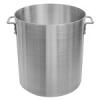I work for a cold storage facility. We have a freezer room that was recently filled with cranberry totes, that are in the processes of being froze out. We use anhydrous ammonia for cooling, we have only electric forklifts, no dry ice is stored in that room. The room was filled with 20,000 totes over a 6 week period, during which the CO2 level did not change. Now, 2 weeks later the CO2 reading in the room has risen to 40,000 ppm. What would be causing the CO2 level to rise?
There is a theory that it has to do with the gases coming off the cranberries. However, our facility has done the exact same loading of the room with cranberries every harvest for the past 7 years and never had this issue before. We have warehousemen that have worked cranberry harvests for 30 years that have never seen this problem. And given that cranberries give off methane when they decompose, I do not believe the berries are the source of the issue. I am at a loss as to what is causing the CO2 levels to rise as much as they have. Can anyone explain this?














